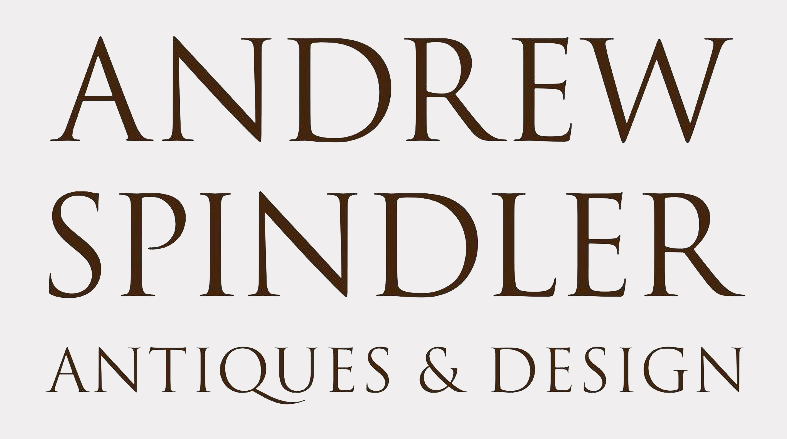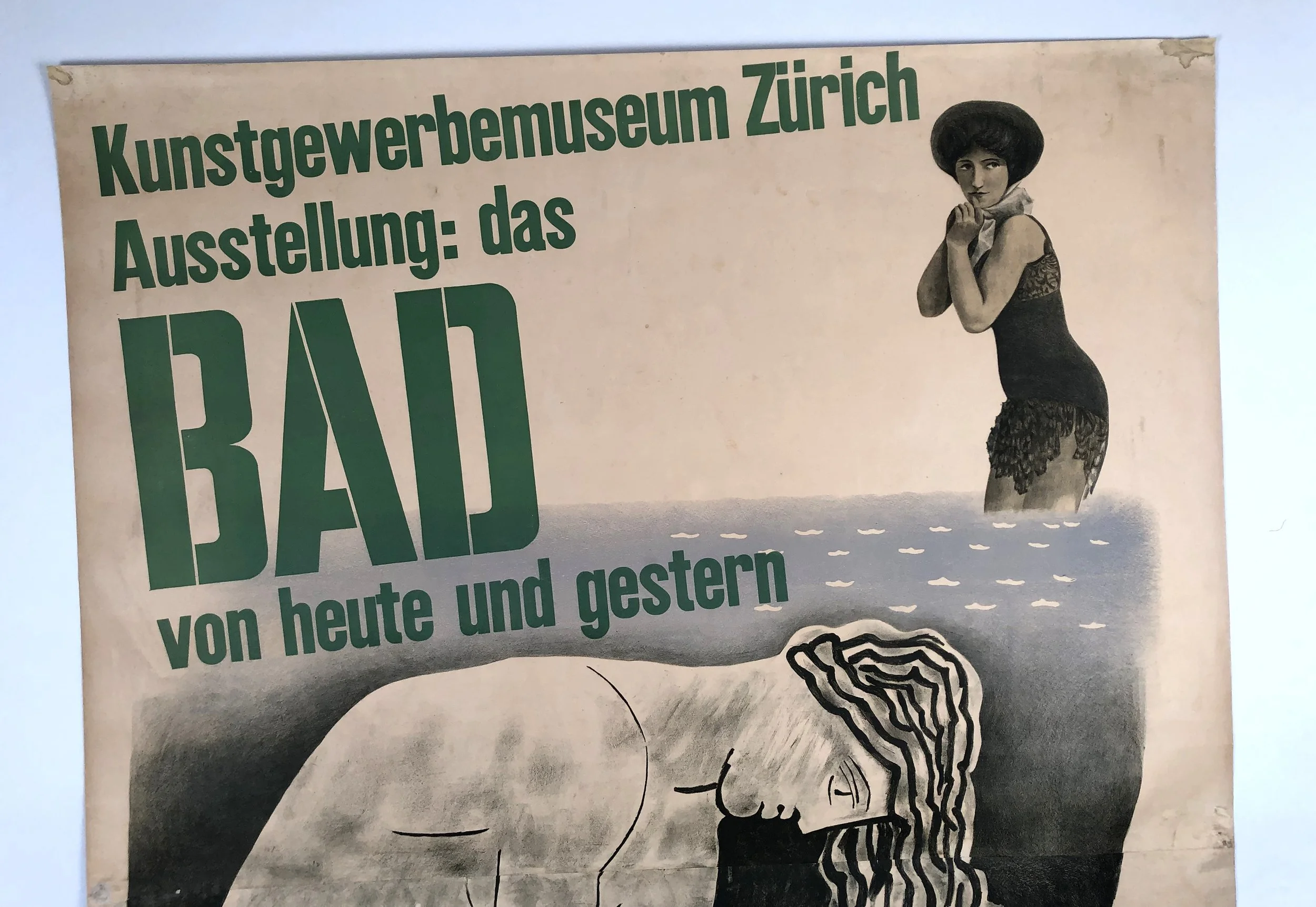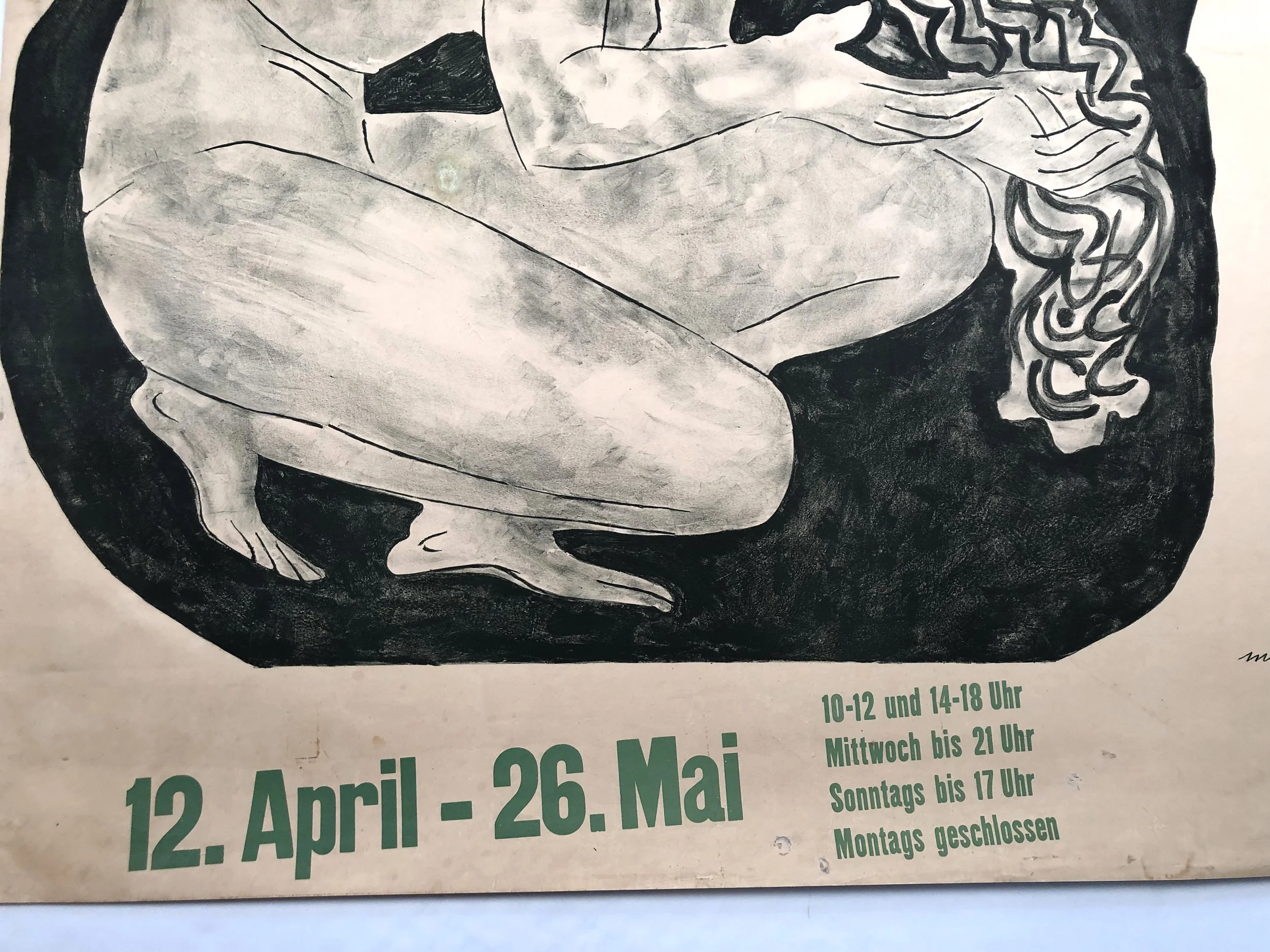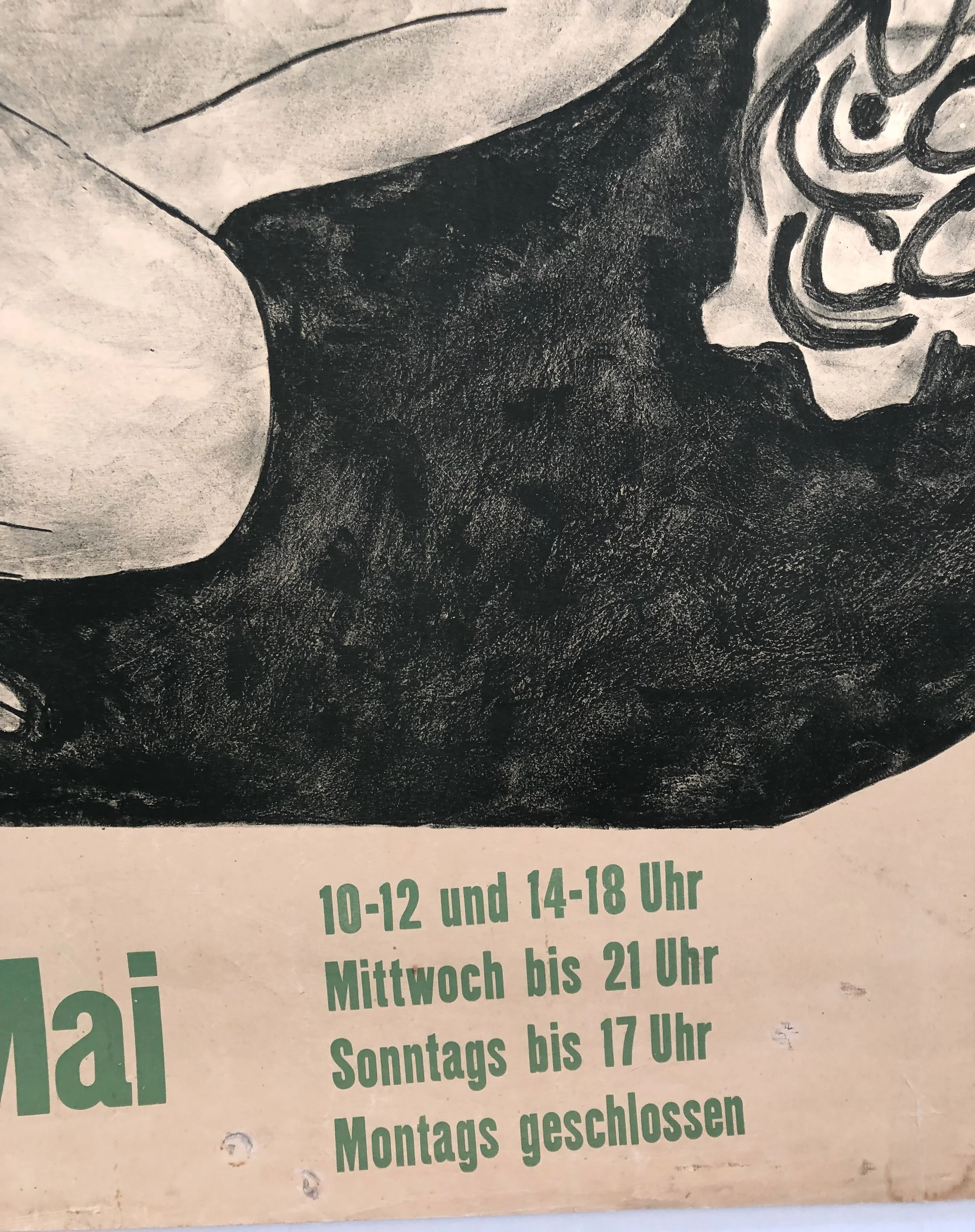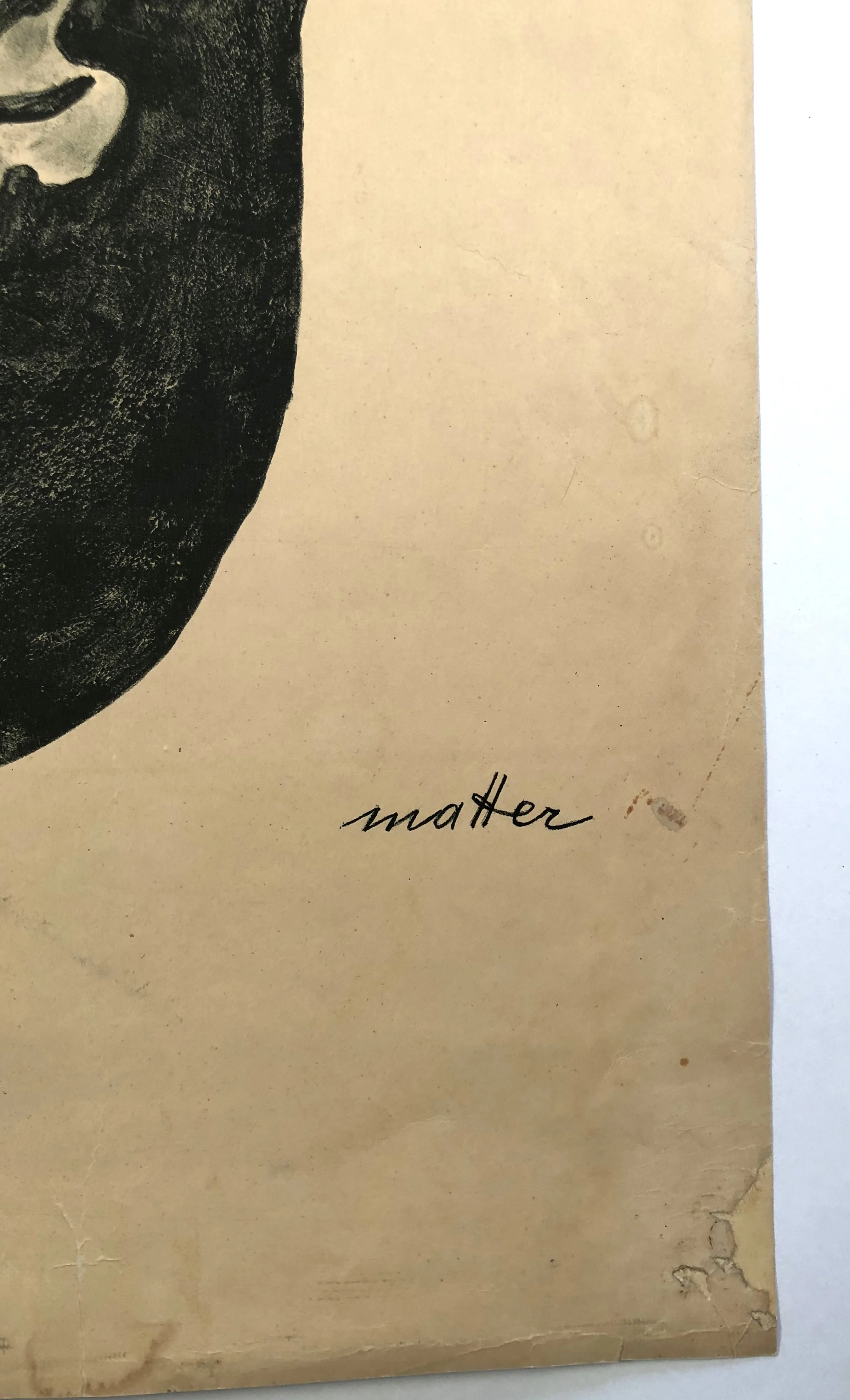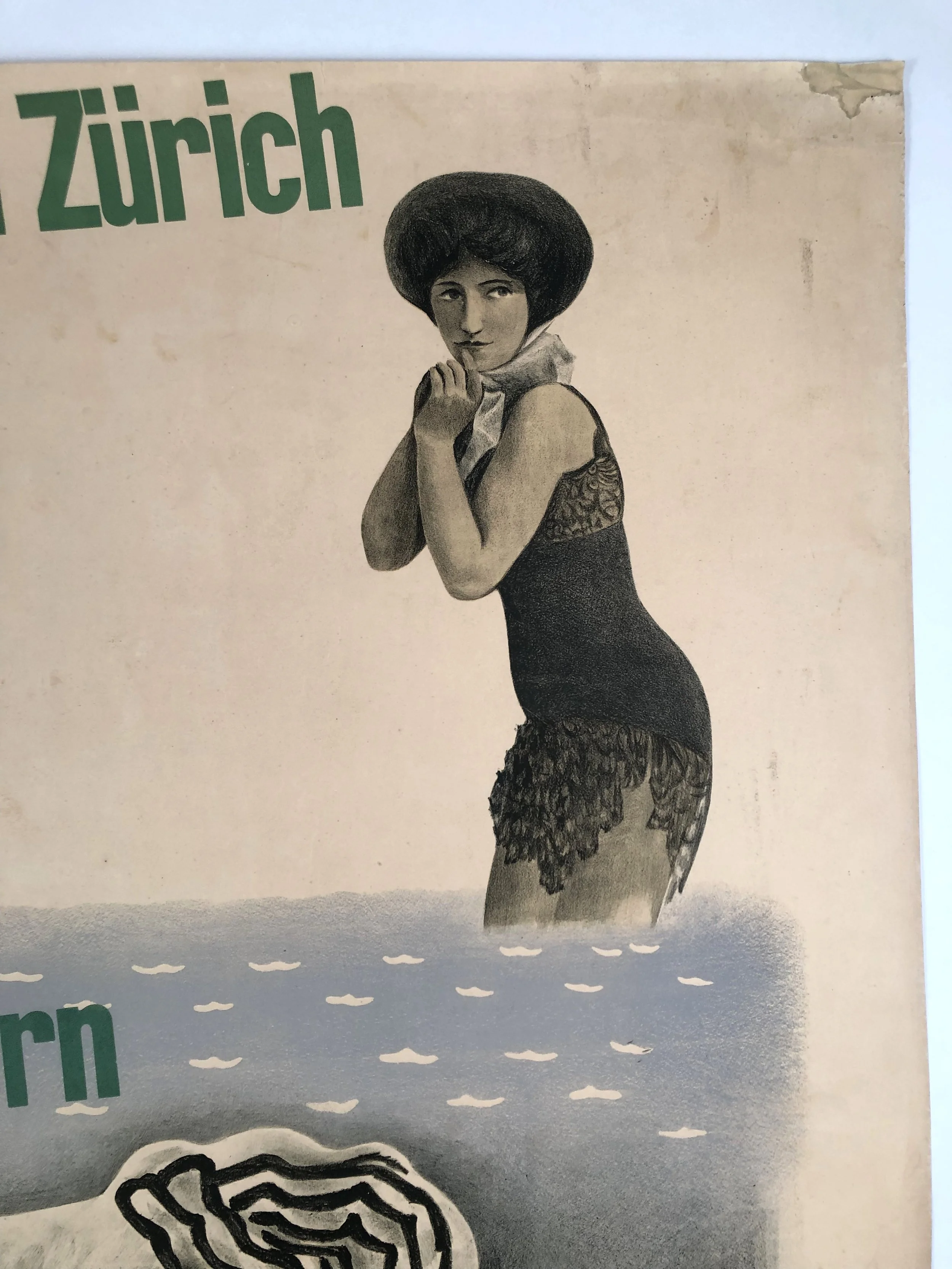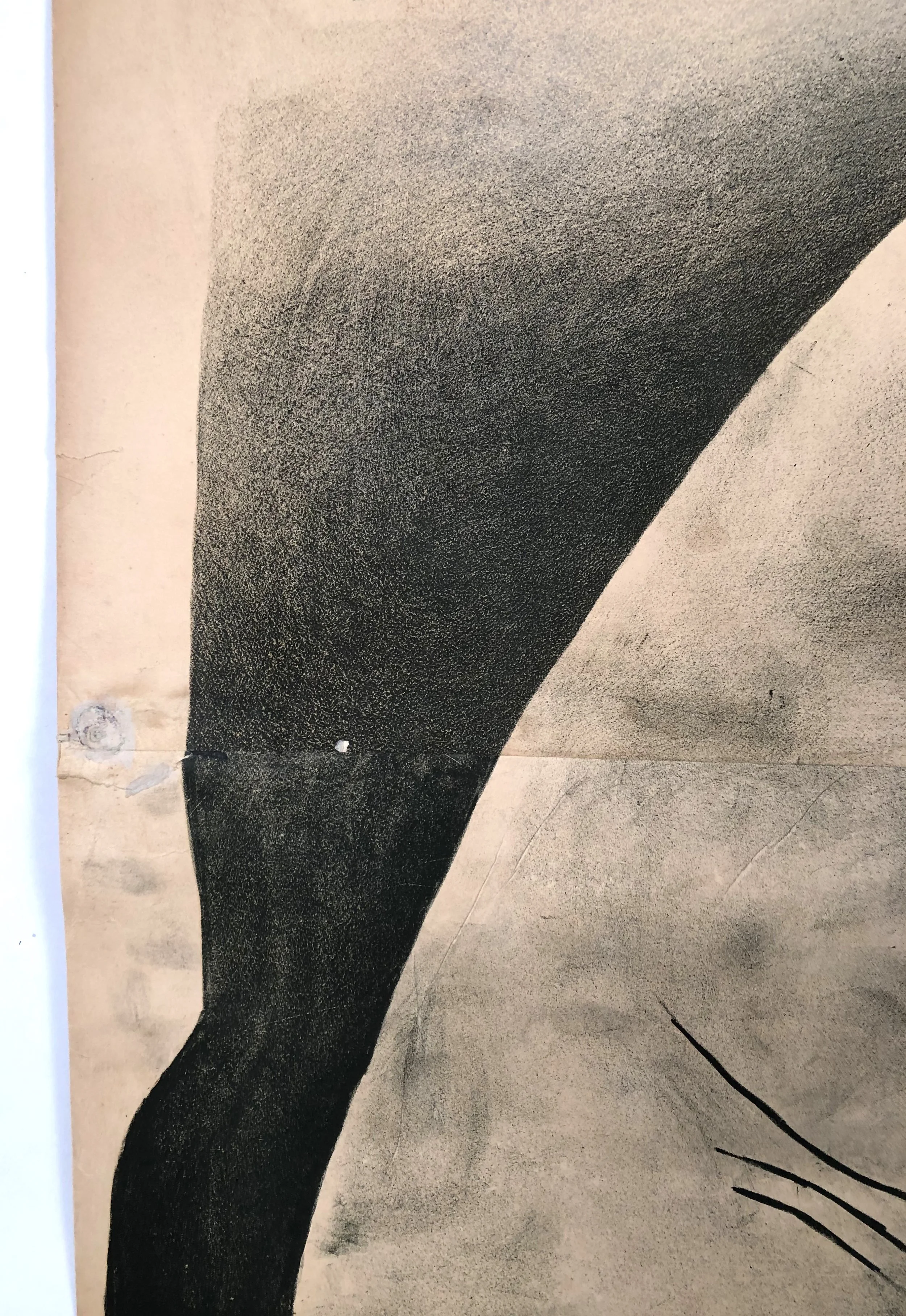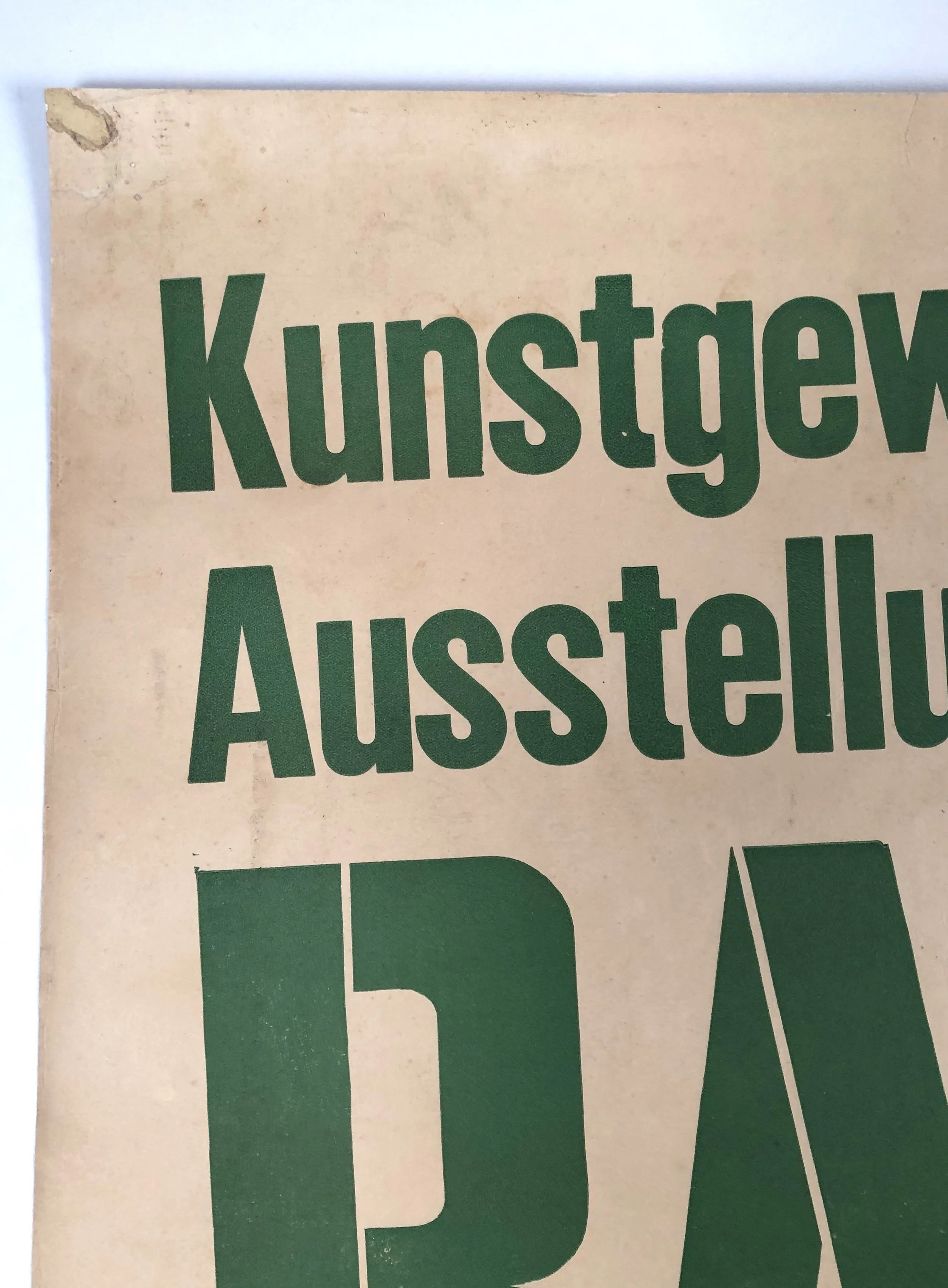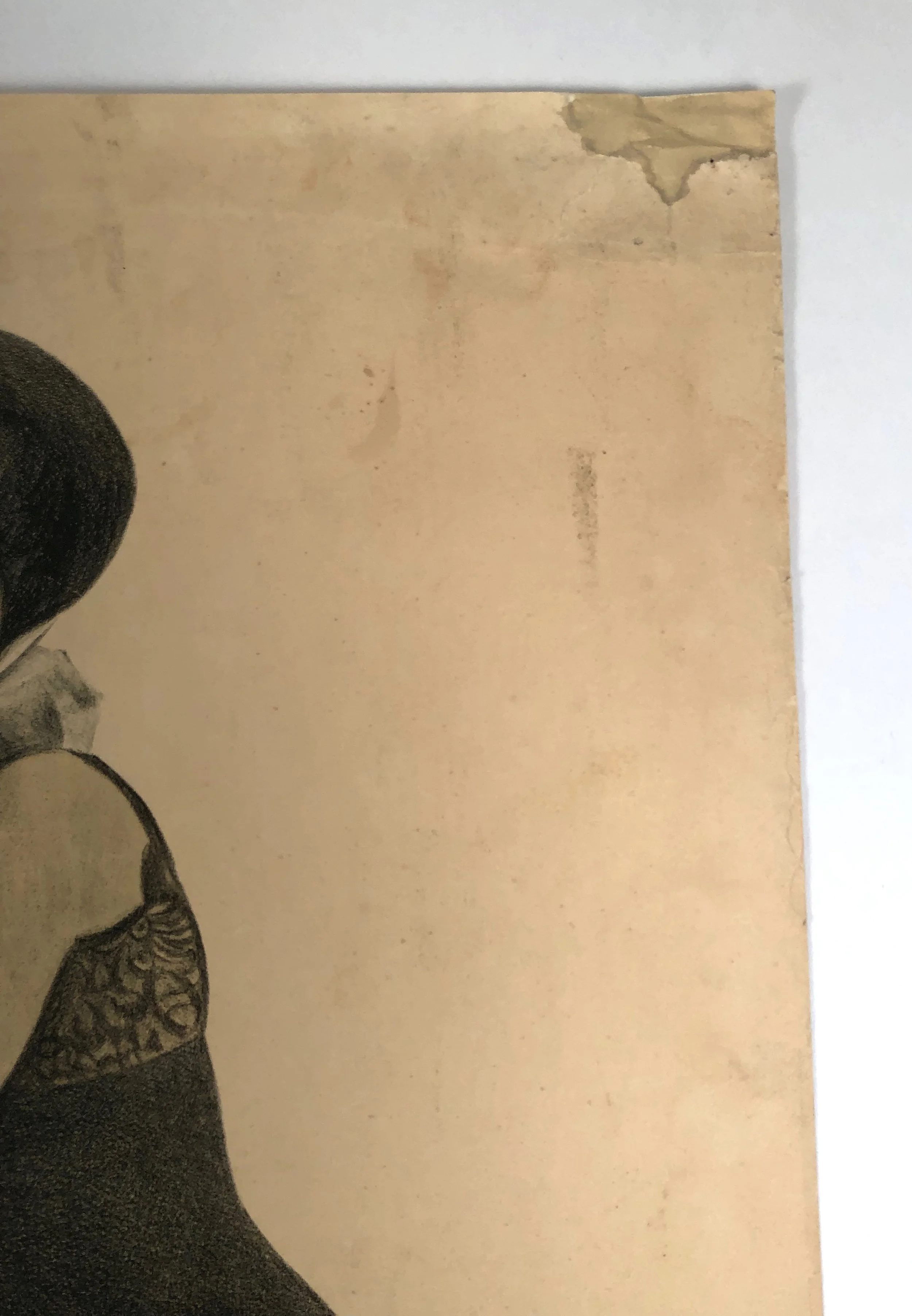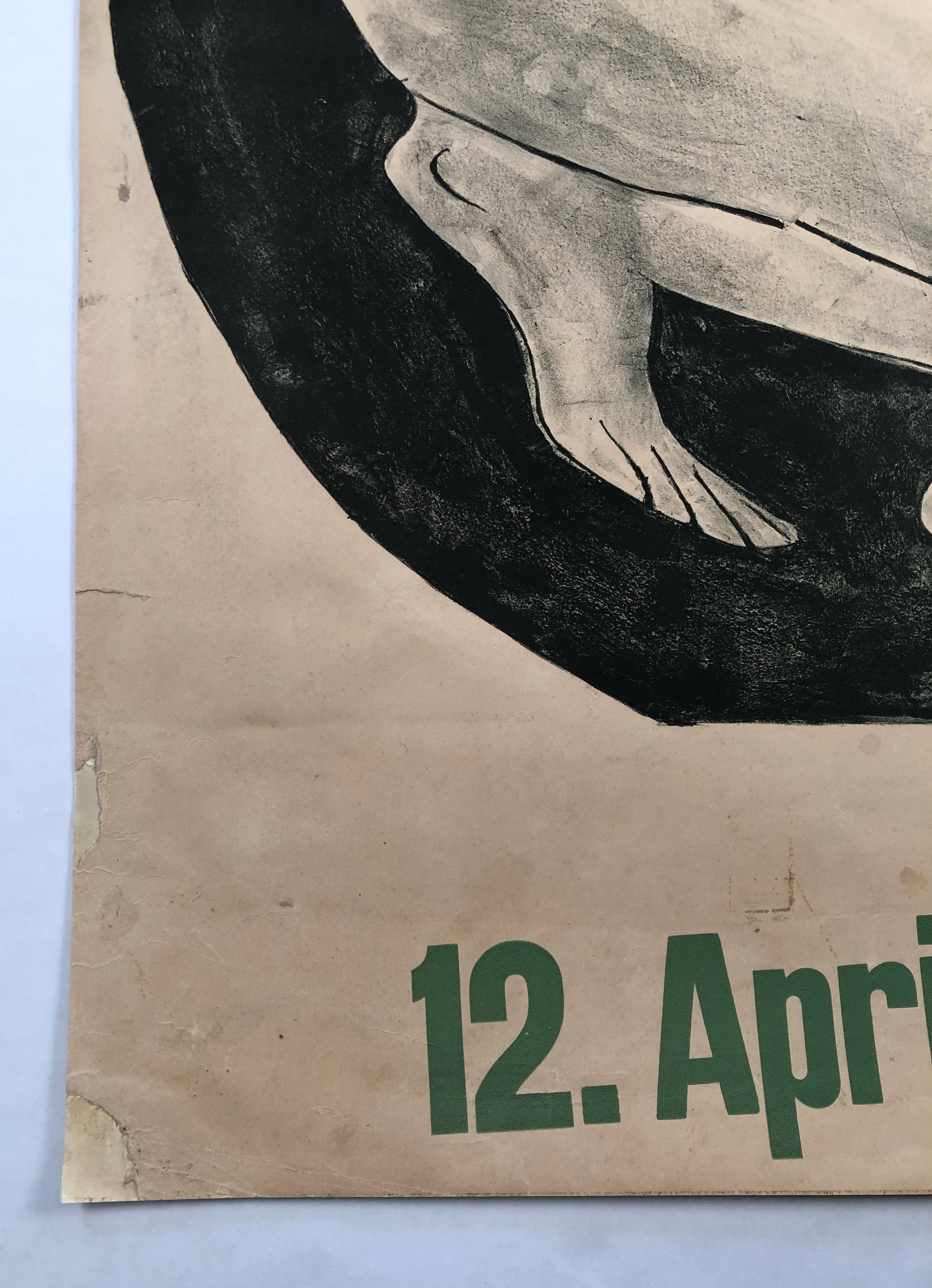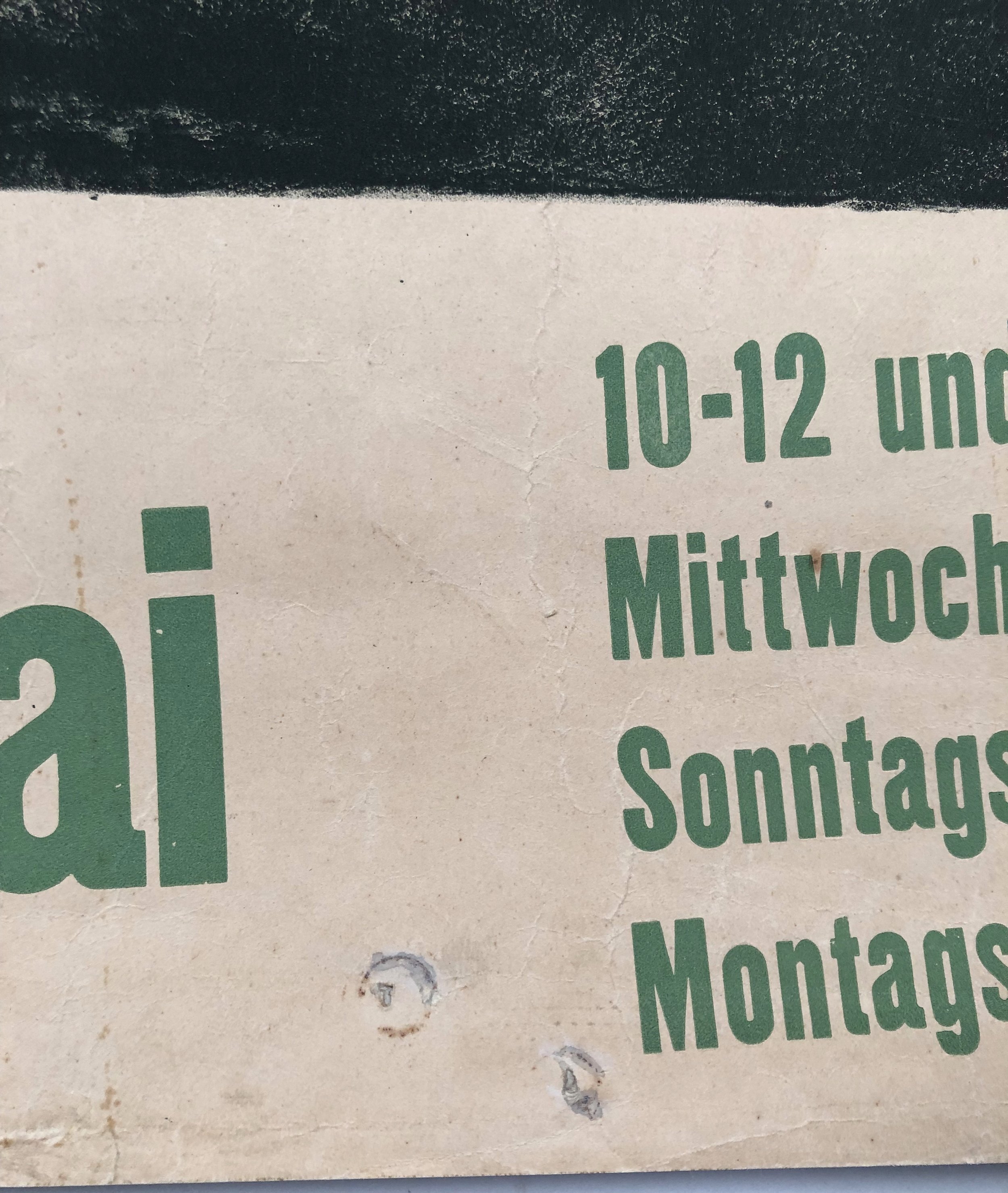Herbert Matter Swiss Exhibition Poster on the History of Bathing and Swimming
Herbert Matter Swiss Exhibition Poster on the History of Bathing and Swimming
An original vintage Swiss exhibition poster by celebrated graphic designer, Herbert Matter, for a show at the Museum of Art and Craft in Zurich, entitled (translated to English): The History of Bathing: From Yesterday to Today. A lithograph printed on cream colored paper with bold green typography, with an image of a modest Victorian lady bather wearing a lacy swimsuit, knee deep in water, tentatively clasping her arms, above a bold image of a female bather, drawn in the style of Picasso (looking back at Classical antiquity), kneeling and washing her hair. The dates and times of the exhibition are printed below. Matter's printed signature is in the lower right hand corner. This poster is a very rare survival and, we think, striking and original, especially as wall decoration in a bathroom, beach house or pool house, among other possibilities. Lined on Japan paper, in 2 panels, as originally produced. Printed in green, charcoal grey and light blue. Various losses to the paper have been restored and in filled and the conservation is visible.
We are also happy to assist with framing, if desired.
Biographical information on Herbert Matter: Born in Engelberg, Switzerland, Matter studied painting at the École des Beaux-Arts in Geneva and at the Académie Moderne in Paris with Fernand Léger and Amédée Ozenfant. He worked with Adolphe Mouron Cassandre, Le Corbusier and Deberny & Peignot. In 1932, he returned to Zurich, where he designed posters for the Swiss National Tourist Office and Swiss resorts. The travel posters won instant international acclaim for his pioneering use of photomontage combined with typeface.
He went to the United States in 1936 and was hired by legendary art director Alexey Brodovitch. Work for Harper's Bazaar, Vogue and other magazines followed. In the 1940s, photographers, including Irving Penn, at Vogue’s studios at 480 Lexington Avenue often used them for shooting the advertising work commissioned by outside clients. The practice was at first tolerated but by 1950 it was banned on the grounds that it ‘has interfered with our own interests and has been a severe handicap to our editorial operations’.[1] In response Matter and three other Condé Nast photographers Serge Balkin, Constantin Joffé and Geoffrey Baker left to establish Studio Enterprises Inc. in the former House & Garden studio on 37th Street (Penn stayed on but also left in 1952).[2]
From 1946 to 1966 Matter was design consultant with Knoll Associates. He worked closely with Charles and Ray Eames. From 1952 to 1976 he was professor of photography at Yale University and from 1958 to 1968 he served as design consultant to the Solomon R. Guggenheim Museum in New York and the Museum of Fine Arts in Houston. He was elected to the New York Art Director's Club Hall of Fame in 1977, received a Guggenheim Fellowship in photography in 1980 and the AIGA medal in 1983.
As a photographer, Matter won acclaim for his purely visual approach. A master technician, he used every method available to achieve his vision of light, form and texture. Manipulation of the negative, retouching, cropping, enlarging and light drawing are some of the techniques he used to achieve the fresh form he sought in his still lifes, landscapes, nudes and portraits. As a filmmaker, he directed two films on his friend Alexander Calder: "Sculptures and Constructions" in 1944 and "Works of Calder" (with music by John Cage) for the Museum of Modern Art in 1950.[3][4]
Close friends of Matter and his wife Mercedes were the painters Jackson Pollock, Willem de Kooning, fellow Swiss photographer Robert Frank and Alberto Giacometti. Matter's wife Mercedes was the daughter of the American modernist painter Arthur Beecher Carles, and was herself the chief founder of the New York Studio School.
"The absence of pomposity was characteristic of this guy," said another designer, Paul Rand, about Matter. His creative life was devoted to narrowing the gap between so-called fine and applied arts. Matter died on May 8, 1984, in Southampton, New York.[5] (Source: Wikipedia)
